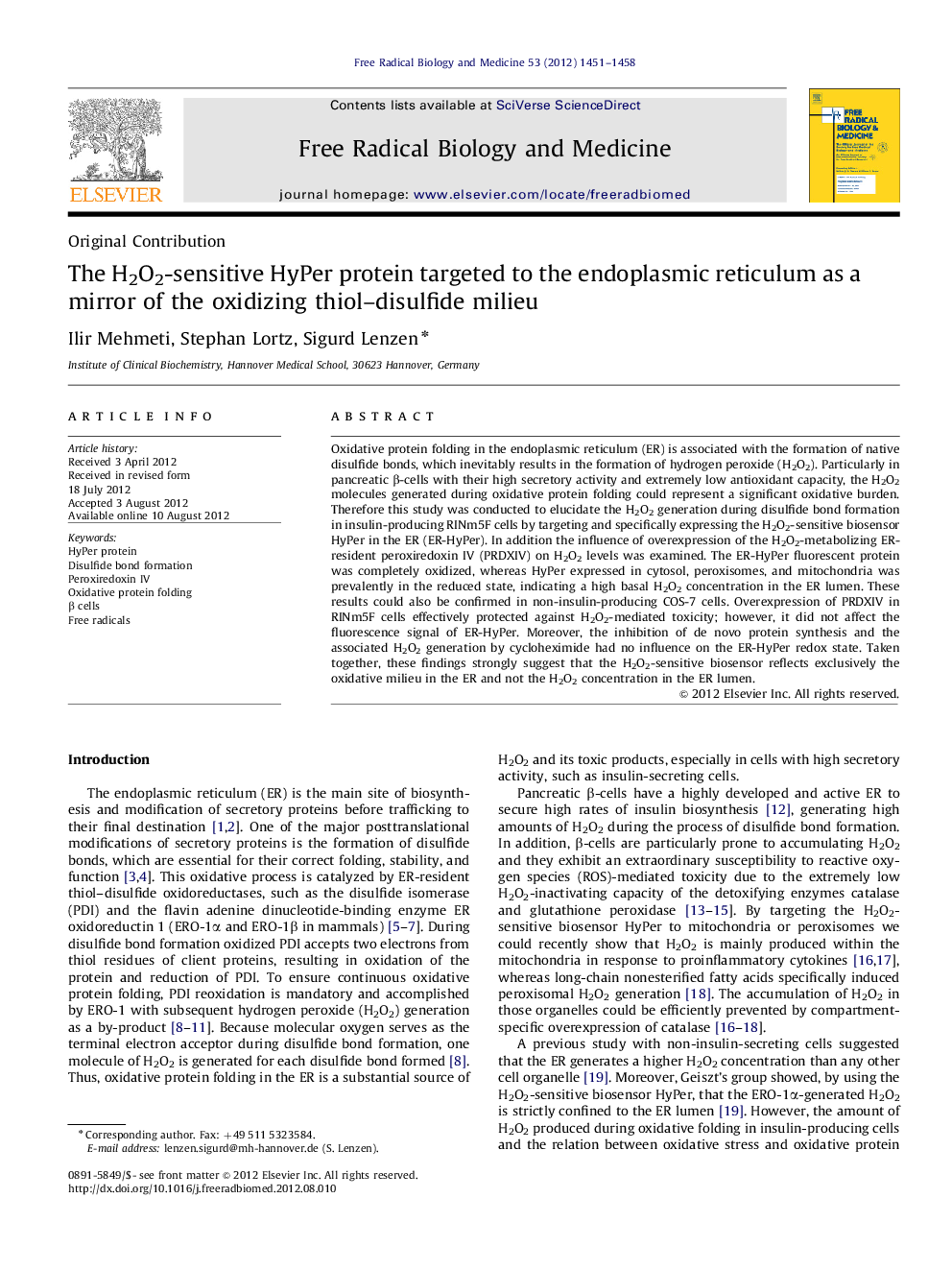| Article ID | Journal | Published Year | Pages | File Type |
|---|---|---|---|---|
| 1908630 | Free Radical Biology and Medicine | 2012 | 8 Pages |
Oxidative protein folding in the endoplasmic reticulum (ER) is associated with the formation of native disulfide bonds, which inevitably results in the formation of hydrogen peroxide (H2O2). Particularly in pancreatic β-cells with their high secretory activity and extremely low antioxidant capacity, the H2O2 molecules generated during oxidative protein folding could represent a significant oxidative burden. Therefore this study was conducted to elucidate the H2O2 generation during disulfide bond formation in insulin-producing RINm5F cells by targeting and specifically expressing the H2O2-sensitive biosensor HyPer in the ER (ER-HyPer). In addition the influence of overexpression of the H2O2-metabolizing ER-resident peroxiredoxin IV (PRDXIV) on H2O2 levels was examined. The ER-HyPer fluorescent protein was completely oxidized, whereas HyPer expressed in cytosol, peroxisomes, and mitochondria was prevalently in the reduced state, indicating a high basal H2O2 concentration in the ER lumen. These results could also be confirmed in non-insulin-producing COS-7 cells. Overexpression of PRDXIV in RINm5F cells effectively protected against H2O2-mediated toxicity; however, it did not affect the fluorescence signal of ER-HyPer. Moreover, the inhibition of de novo protein synthesis and the associated H2O2 generation by cycloheximide had no influence on the ER-HyPer redox state. Taken together, these findings strongly suggest that the H2O2-sensitive biosensor reflects exclusively the oxidative milieu in the ER and not the H2O2 concentration in the ER lumen.
► The H2O2-sensitive biosensor HyPer reflects only the oxidative milieu in the ER. ► HyPer is unsuitable for monitoring H2O2 generation in the ER. ► Overexpression of peroxiredoxin IV protects insulin-producing cells against H2O2-induced toxicity.
